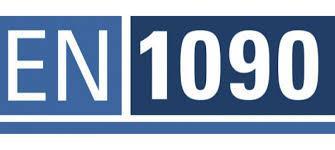
EN 1090-2 (2018)
EN 1090-2:2018 is a standard that plays a pivotal role in the design and execution of steel and aluminum structures. It provides a recommended matrix for determining the execution classes of these structures, and guides the selection of execution classes based on factors such as the consequences of structural failure, the structure’s complexity, and the structure’s criticality. This is crucial for ensuring the safety and reliability of structures.
Table B.1 of EN 1090-2:2018 is available online and is used to determine a structure’s execution class. This table considers factors such as the type of structure, its intended use, and the consequences of structural failure.
EN 1991-1-7:2006 is a standard that is part of the design code and categorizes the consequences of classes. This standard references other standards, including EN ISO 3834, which outlines the requirements for welding companies.
If surface-breaking welds are noted, non-destructive testing (NDT) must be completed. Annex L of EN 1991-1-7:2006 is informative but not mandatory. This annex includes information on the weld inspection class.
EN 1090-2:2018 also provides guidelines on inspecting and testing preloaded bolted connections. These guidelines are essential for ensuring the safety and reliability of steel and aluminum structures.
In conclusion, EN 1090 and EN 1991-1-7 are essential standards used in the design and execution of steel and aluminum structures. These standards provide:
- Guidance on determining execution classes.
- Categorizing consequences of classes.
- Inspecting and testing preloaded bolted connections.
As professionals involved in the design and execution of steel and aluminum structures, it is not just important, but vital for engineers and designers to be familiar with these standards and to diligently follow them. This is a crucial step in ensuring the safety and reliability of structures.






